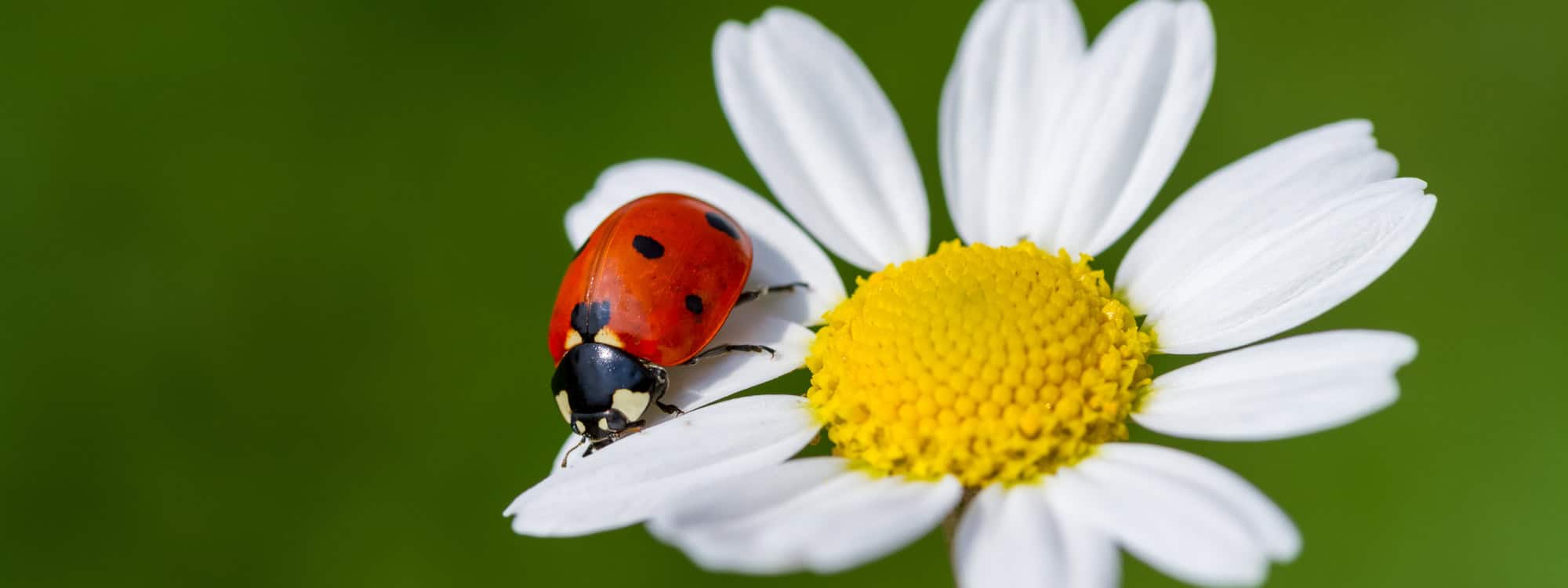Ladybug
Identification: Ladybugs, also known as ladybird beetles, are small, round, brightly colored insects that measure around 5 to 8 mm in length. They are most commonly red or orange with black spots, although some species are black with red spots or other color variations. Their distinctive dome-shaped body and spotted pattern make them easily recognizable. Ladybugs have a smooth, shiny exoskeleton and are known for their non-aggressive, gentle nature. Unlike some other beetles, ladybugs do not sting, and their presence is usually a welcome sight in gardens due to their beneficial role in pest control.
Habitat: In Muskoka, ladybugs are typically found in gardens, fields, and wooded areas, where they thrive in plants with aphids, their primary food source. They often seek shelter in the crevices of tree bark, under leaves, or in the cracks of homes during the colder months, where they may hibernate in large groups. Ladybugs prefer environments rich in vegetation, making them common in agricultural and natural landscapes. They are also attracted to homes and buildings with nearby greenery, particularly in the fall, as they look for a warm place to overwinter.
Diet: Ladybugs are primarily carnivorous, with aphids being their main food source. They are natural predators of many common garden pests, including aphids, scale insects, and mealybugs. A single ladybug can consume up to 5,000 aphids in its lifetime, making them a valuable ally for gardeners and farmers looking to control pest populations naturally. While they may occasionally feed on pollen or nectar, their primary role in ecosystems is as a natural insecticide, helping to reduce the need for chemical pest control.
Behavior: Ladybugs are solitary creatures, but they can often be found in large groups during hibernation in the winter. They are active during the warmer months, feeding on pests and mating. Their bright colors serve as a defense mechanism, warning potential predators of their unpleasant taste or toxic chemicals. When threatened, ladybugs can secrete a yellow fluid from their legs that has a strong odor and can stain surfaces. This behavior, known as “reflex bleeding,” serves to deter predators. Ladybugs are also known to fly short distances when searching for food or a suitable place to lay their eggs.
Prevention: To prevent ladybugs from entering your home, it is important to seal any cracks or gaps around windows, doors, and other entry points. Ladybugs are drawn to warm, sheltered areas during the fall, so ensuring that these openings are properly sealed can help keep them outside. It is also beneficial to remove any aphid-infested plants around the home, as this will reduce the attraction for ladybugs. Ladybugs are generally harmless, but if they do become a nuisance, a gentle relocation outside is the best approach.
Control: Since ladybugs are beneficial insects that help control harmful pests in gardens, controlling their presence should only be necessary when they invade homes in large numbers. If ladybugs have gathered in your home, the best method of control is to carefully vacuum them or gently capture them and release them outside. For those looking to manage ladybug infestations more effectively, Bug Free Muskoka’s general pest control service can help identify and seal potential entry points, allowing you to enjoy the benefits of ladybugs in your garden without them becoming an indoor nuisance.
By taking these preventive measures, homeowners can reduce the chances of a ladybug infestation indoors while still benefiting from their natural pest control abilities in the garden.

